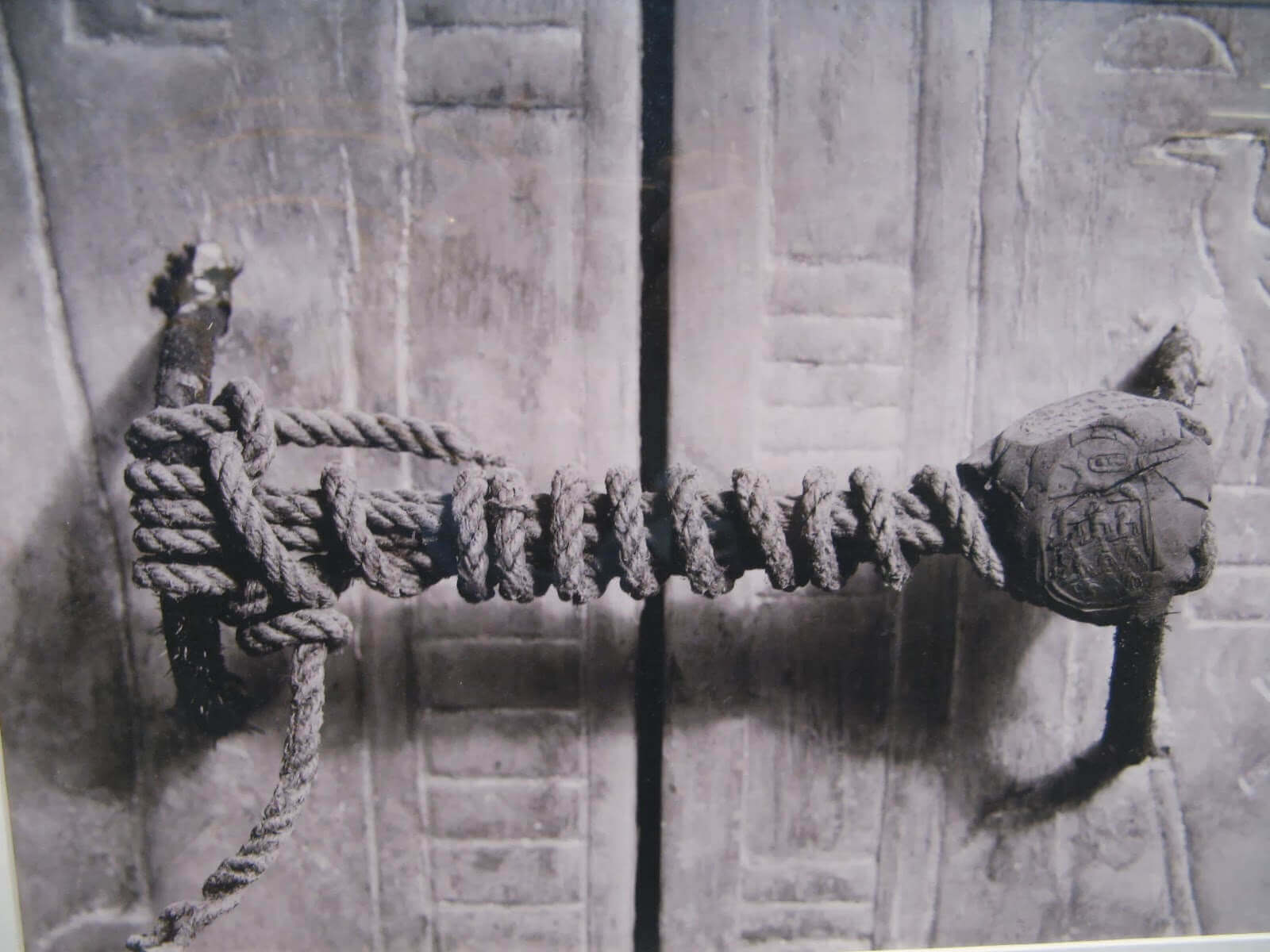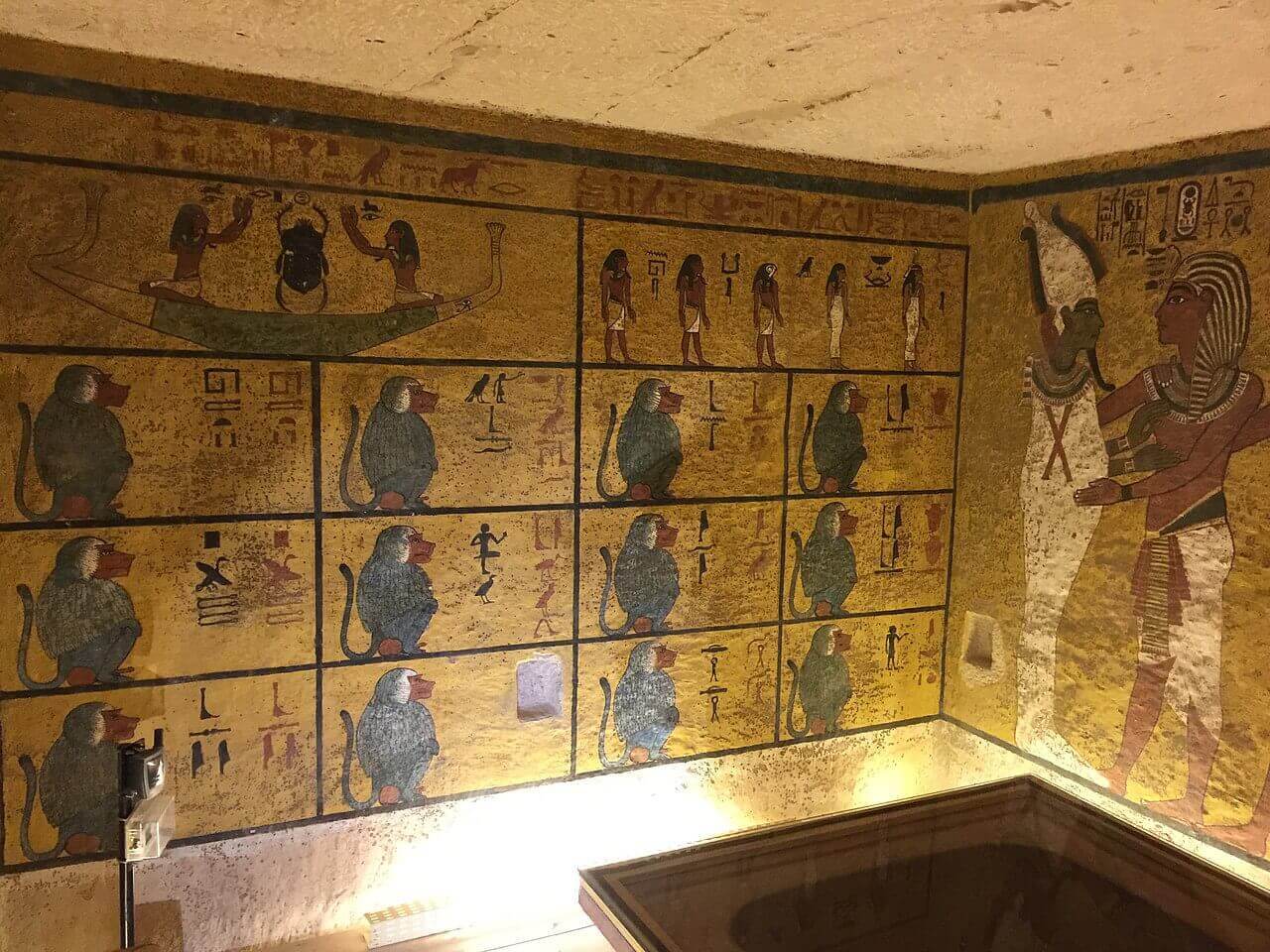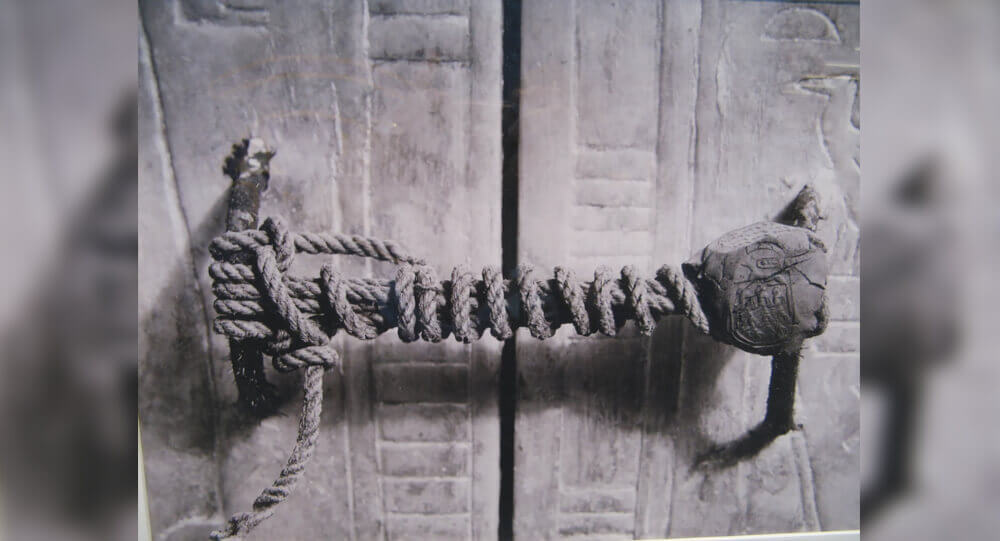In actuality, this seal belonged to the fifth shrine of King Tut. The king was interred in four separate sarcophagi, each of which was housed within five separate shrines. This sealed vessel remained undamaged for 3,245 years. Ramesses IV’s tomb, which was situated right above Tut’s entrance, left debris covering it, which is why it was discovered so late.
Even though the outermost shrine of the young pharaoh had previously been opened twice, the necropolis seal, which indicated that the pharaoh’s mummy was undamaged, was still present on the doors of the second of the enormous shrines made of gilded wood that held the royal sarcophagus.
In the early 1920s, renowned Egyptologist and archaeologist Howard Carter opened the boy-king’s tomb. There was a treasure inside the tomb that exceeded all previous finds in splendor. Howard Carter found three more shrines in Tutankhamun’s Burial Chamber shortly after removing the lid of the outermost shrine.

The second shrine’s elaborately decorated doors were closed when Harry Burton took these pictures, with a rope wound through the simple copper handles holding them firmly in place. A delicate clay seal depicting Anubis, the jackal god of ancient Egypt tasked with guarding the cemetery, was attached to the knotted cord.
Carter and his financier, Lord Carnarvon, were aware from the beginning that the tomb had been compromised due to a unbroken sealed and replastered opening in the outer doorway (which was not on the fifth shrine).
Once inside the tomb, the disordered condition of the materials, the damage to multiple objects, and the obvious absence of bedding, solid metalwork, glass, oils, and unguents all pointed to the tomb having been looted in antiquity.
Related Topic You Might Find Interesting:
- Xin Zhui And The Story Of The Stunningly Intact Lady Dai Mummy
- Top 10 Greatest and shocking Archaeological Discoveries of All Time
- The accidentally discovery of Riace bronzes
According to legend, he also discovered an antiquated clay tablet in the antechamber. The inscription said, “Death will slay with his wings whoever disturbs the peace of the pharaoh,” when he translated it later.
Later on, this would come to be known as the fabled “Curse of the Pharaohs,” which is only a myth. It is said that the curse, which does not distinguish between thieves and archaeologists, can bring misfortune, disease, or even death.
Even though Tutankhamen was a relatively insignificant king during his lifetime, his tomb ended up becoming one of the most valuable archaeological discoveries because it was hidden beneath another tomb and was never discovered by grave robbers.

The tomb’s entrance was sealed by rocks and mud from flooding due to its lower location in the Valley of the Kings, and the location was unknown until Carter’s discovery.
The amount of wealth that archaeologists have discovered when Tutankhamen was buried is only a small portion of what he could have accumulated had he lived a longer life. This is because he was a relatively minor Pharaoh who appeared to have died suddenly at a young age. Can you imagine, then, the enormous wealth that great Pharaohs like Ramesses II must have buried?
How did the unbroken seal last 3,200 years without deteriorating?
One of the basic human technologies is the rope. Researchers have discovered two-ply ropes that date back 28,000 years. The first civilization in history to use specialized tools to make rope was Egypt. The dryness of the desert air is more important to its longevity than the rope itself. Things get dried out and preserved by it.
The lack of oxygen is another essential. Tombs are closed off from the exterior. As long as they have oxygen, bacteria can break things down; otherwise, they essentially suffocate. Rope, wooden carvings, cloth, organic dyes, and other materials that wouldn’t have survived anywhere else in the world are frequently discovered in Egyptian tombs and pyramids. Far more organic material was preserved in Egypt than would have been the case in a non-desert environment.
This is in contrast to sites such as the Maya sites in Central America, which are much older but have yielded almost no organic material. The primary distinction is the environment—desert versus jungle.




